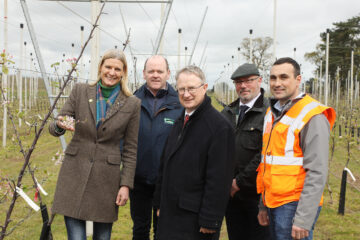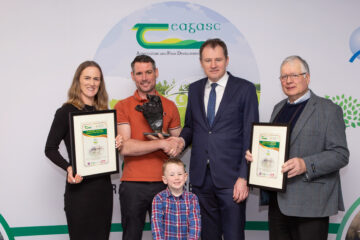Reducing lameness in Irish dairy cows will result in a higher standard of cow welfare, which is crucial to maintain Ireland’s image as a producer of high quality sustainable dairy products; will also decrease the use of antimicrobials on dairy farms, thereby lowering the potential for antimicrobial resistance; and increase the productive lifespan of dairy cows, which will decrease the carbon footprint of Irish milk production.
Recent Teagasc research has found that on average one in ten dairy cows in Ireland is lame at any one time. With an estimated cost of at least €300 per lameness episode, this represents, both a significant economic cost, and a welfare concern for farmers nationally.
However, there are many things that farmers can do to address this challenge. Dr. Muireann Conneely, Teagasc Moorepark, in conjunction with Ned Dunphy, Waterford Farm Relief Services (FRS), and Ger Cusack, Veterinary Practitioner, Comeragh Vets, both from Kilmacthomas, Co. Waterford, have just launched a new publication called, ‘Reducing Lameness in Irish Dairy Herds’. This publication describes the common lameness conditions, lists the risk factors and details the steps that farmers can take to reduce both the incidence and severity of lameness in their dairy herds.
Speaking at the launch of the guide at Teagasc Moorepark, Dr. Conneely said, “minimising lameness on dairy farms is a challenge faced by farmers worldwide. While cows managed in indoor milk production systems typically suffer from a higher incidence of lameness, cows grazing outdoors also suffer from the condition. Our guide will equip Irish dairy farmers with the information that they need to tackle lameness, in clear and simple terms.”
Speaking at the launch, Ger Cusack, Comeragh Vets observed, “as a vet working in a busy large animal practice, I advise farmers to treat lame cows immediately. Prompt action reduces the severity of the condition and improves the chances of a complete recovery.”
Ned Dunphy, Waterford FRS, commented, “prevention is the key to minimising lameness. Ensuring the cow’s environment is conducive to hoof health is crucial. I also encourage preventative hoof paring and regular foot bathing to reduce the incidence of the disease on dairy farms.”
Launching the lameness in dairy cows guide, Professor Pat Dillon, Director of Research, Teagasc said, “factors such as milk yield and longevity contribute to the carbon footprint of the milk we produce in Ireland. Lameness negatively impacts on our footprint by lowering both milk yield and fertility in affected cows. This guide will contribute to the knowledge available to farmers on how to reduce the incidence of lameness on their farms and improve the sustainability of milk production.”
Copies of the guide are available from Teagasc offices nationwide. The guide is also available on the Teagasc website at https://www.teagasc.ie/publications/2022/reducing-lameness-in-irish-dairy-herds.php
Source: Teagasc



